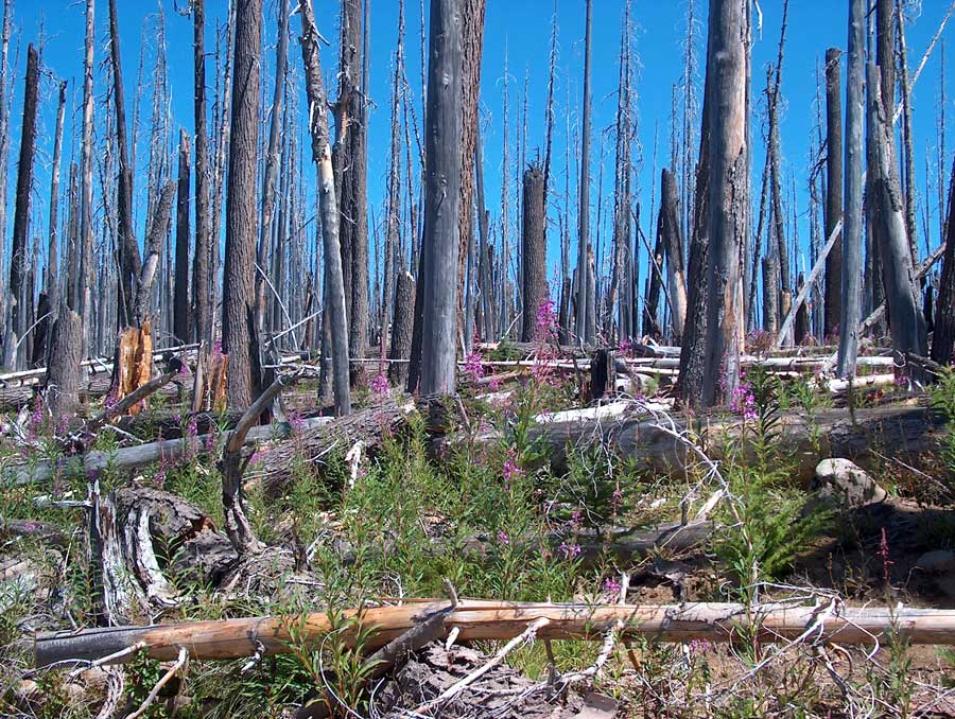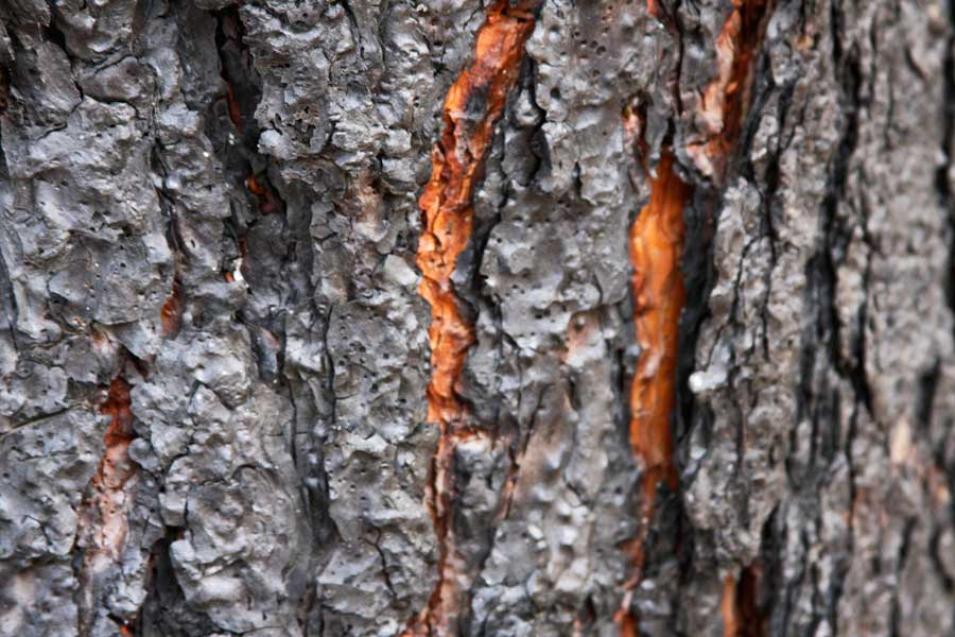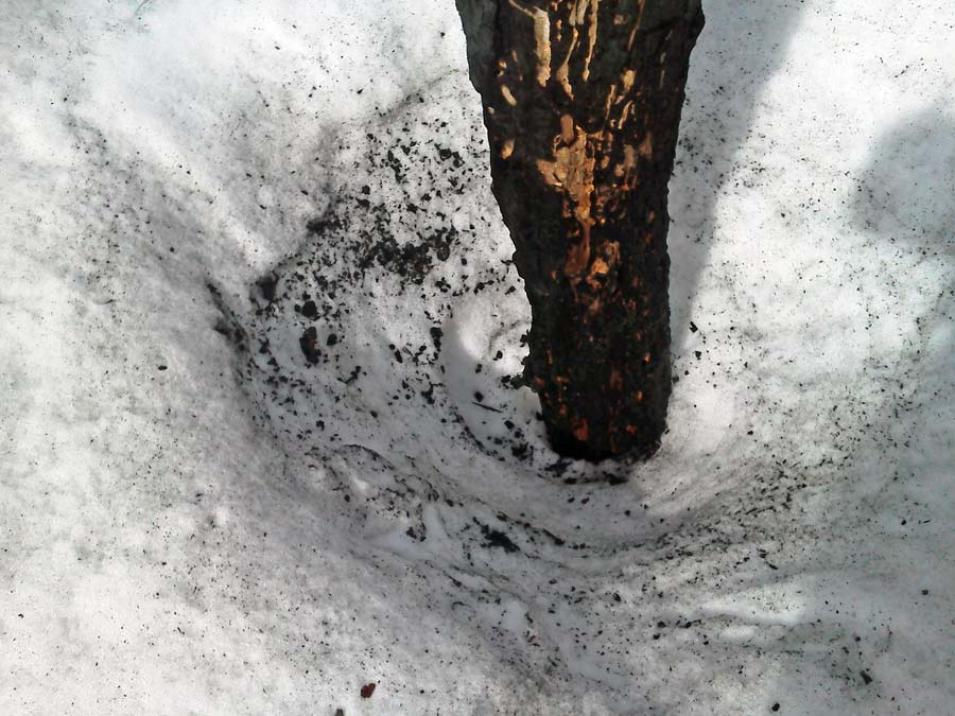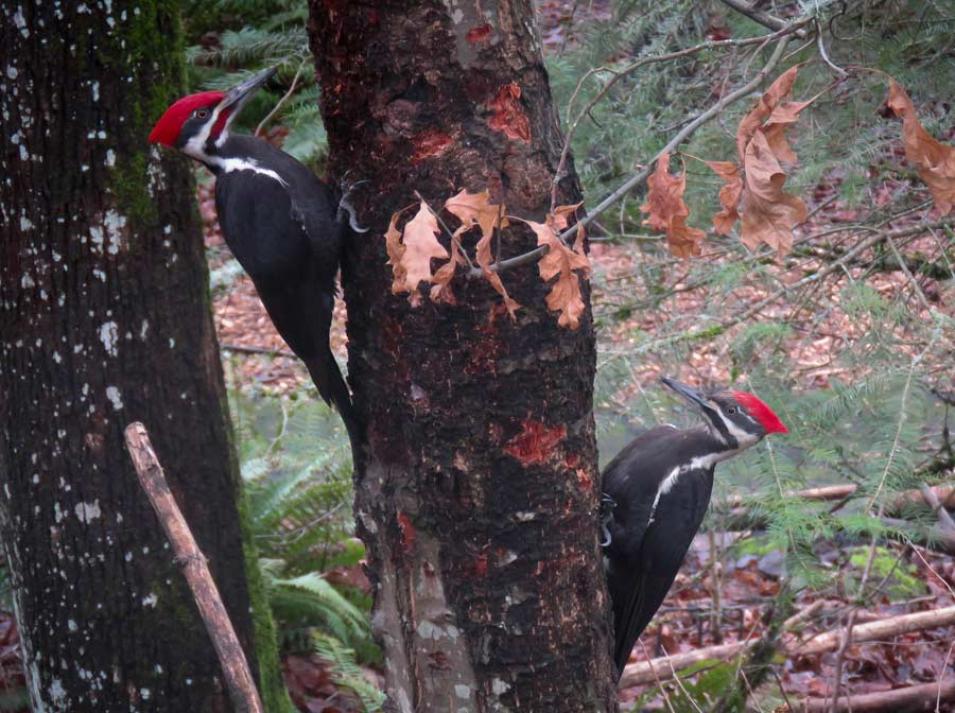Anne Nolin, a professor at OSU and co-author on Gleason’s study, said, “After a fire, things happen that we didn’t necessarily think about.” Gleason’s study also used MODIS, but focused on snow cover. “If you burn down a forest, albedo increases hugely,” Nolin said. “The albedo of vegetation might be around 40 percent; the albedo of snow is about 80 percent.”
Initially fire sends plumes of carbon into the atmosphere, warming it. Over time as snags fall, the landscape gets bleaker. “With a treeless surface, the albedo increases, and more albedo means more sunlight is being reflected, and that’s a cooling affect,” O’Halloran said. So albedo can offset the warming from CO2. “They’re sort of canceling each other out,” he added.
For Gleason, also looking at snow, something else developed. Three years post-fire, during snowfall, she found little difference in snow surface albedo between burned and nearby, unburned forests. “Once snow stopped falling and started melting, the debris that sloughed off charred snags concentrated on the snow surface, darkening it and lowering its albedo,” Gleason said. The predominant source of energy for snowmelt is sunlight. With a darker surface and no canopy to block sunlight, the snowpack absorbed 200 percent more sunlight. As a result, snow melted three weeks earlier in the burned forest.
“It’s an interesting paradox,” Nolin said. On the one hand, snow albedo cools the atmosphere, but the charred debris absorbs more heat, melting snow sooner and faster. “Studies have shown that an earlier snowmelt drives more forest fire disturbance,” Gleason said. “The West gets its precipitation in the winter, stored as snow. Snowmelt provides a moisture subsidy. If snow melts earlier, there is a longer period of drought stress.” Gleason hopes her research will help hydrological forecasters, the people on the ground trained to predict how much water is coming out of the mountains and when.
Still, fires are natural. “Fires are ecosystem machines,” Gleason said. “They maintain healthy ecosystems.” Post-fire environments create heterogeneity in the landscape. Instead of a monoculture of clogged fuels, they increase diversity in forest densities, form microclimates, and open the land to new species. “It’s just now we have bigger fires, more intense, higher burn severity, a longer fire season, and more fires,” Nolin said. “It’s not necessarily bad. It’s just that we’re still learning what this means.”





